The Origin of Brazilian Yellow bourbon Coffee beans description of the flavor and taste of yellow bourbon coffee beans in Queen's Manor
The average variety of coffee turns red when it ripens, while the yellow bourbon is famous for its yellow ripe fruit, which is regarded as a precious variety in Brazil.
This variety has been highly appreciated by coffee buyers and bean bakers in recent years, in part because of its unique and high-quality flavor characteristics and its different appearance from other varieties. The yellow bourbon actually has a long history of cultivation, but it is developed in the Brazilian market.

The Origin of Yellow bourbon in Brazil
As a coffee variety, yellow bourbon has been cultivated for nearly 90 years, but we can see from its origin, that is, its patrilineal and matrilineal varieties.
In the 1850s, Brazil became the world's leading coffee producer, relying mainly on Tibica, which was first grown in Brazil in the 1720s. Exports of Tibika fell because of its limited production, when a Brazilian traveled to the island of Reunion in the Indian Ocean east of Madagascar in order to obtain seeds from the red bourbon variety. By the 1870s, red bourbon had become the most common variety in many coffee shops in Brazil.
And in 1871, something strange happened. A variety has been born in the city of Botucatu, and the fruit is yellow, which is unprecedented in Brazil and has no record. The yellow Tibica variety was called Yello Botucatu at that time, but the yield of this variety was not high. But many farmers began to grow this variety because they were curious about the color of the fruit it produced. It is worth noting that some researchers believe that yellow bourbon is a natural variant of red bourbon.
The yellow bourbon as we know it today is believed to have first appeared in 1930 on a red bourbon farm near Pederneiras (SP). Many people think it is the result of natural reproduction between red bourbon and yellow Botucatu. This variety is very similar to red bourbon except that its fruit is yellow, and its productivity is higher.
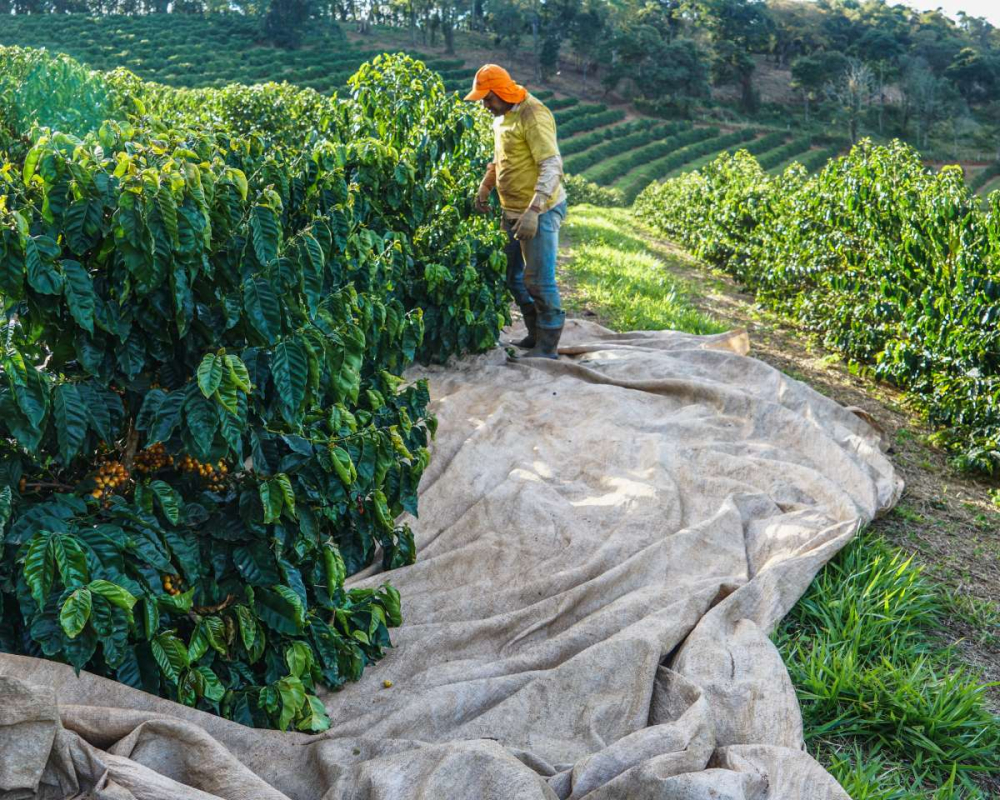
Its appearance attracted the attention of researchers at the Campinas Institute of Agriculture (IAC), including Carlos Arnaldo Krug, who conducted his first formal study of Huang bourbon in 1942. Over the next three years, 30 varieties were planted and studied. IAC is in the research field of Ja ú (SP).
In the 1950s, the most promising yellow bourbon variety was given the code "IAC J" and provided the results to farmers. In 1951, Professor Mendes from the same institute studied the yields of the varieties planted at that time: Tibica, yellow Botucatu,Sumatra, red bourbon, yellow bourbon and elephant beans, which proved to be the most productive.
These promising results were achieved, but the yellow bourbon never became a strong breed in Brazil in the decades that followed. Although it is still grown commercially, it is not common for farmers to use it. Because of its special yellow ripe fruit, it is still often regarded as a novel variety.
In the past, during the period studied by Krug, Mendes and several professors, the quality of coffee flavor was not a core part of plant research. Emphasis is usually placed on productivity, plant health and resistance to diseases and insect pests. Around the same time as Huang Bourbon appeared in Brazil, popular varieties such as Kaddura (1937), Mondonovo (1943) and Kaduai (1949) also appeared.
However, in the boutique coffee and the third wave of coffee, yellow bourbon will still be a refreshing experience.
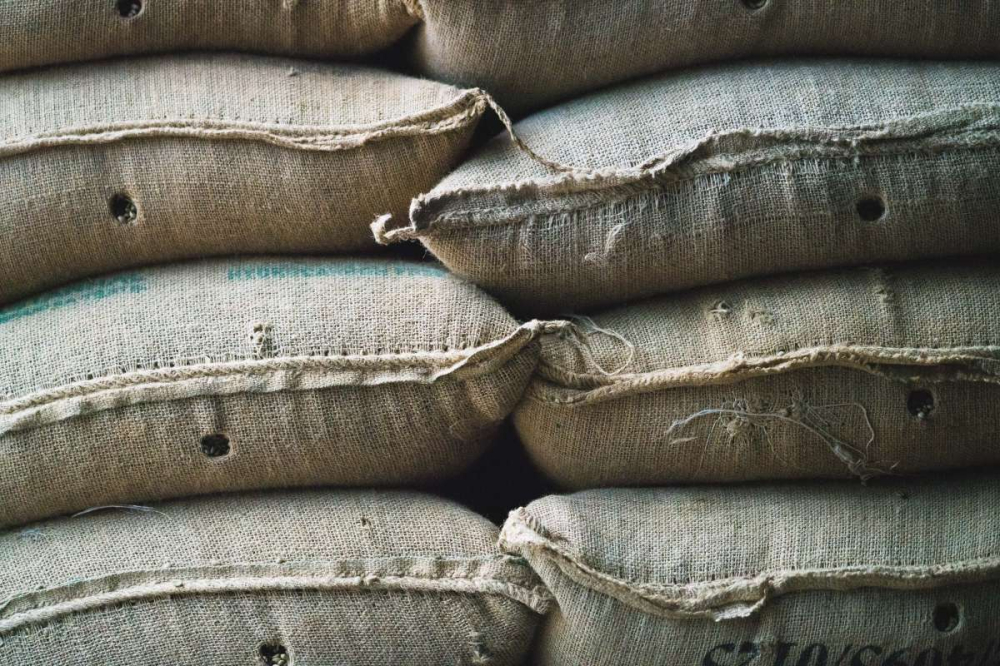
Why is this variety yellow?
In 1942, Professor Krug discovered the genetic origin of the color. It is a gene pairing called "Xanthocarpa", which comes from the Greek word xanthus (yellow) and carpus (fruit).
Here is how it grows: plants with a pair of dominant XcXc genes produce red fruit; plants with a pair of recessive xcxc genes produce yellow fruit; and in rare cases, plants with one dominant gene and another recessive Xcxc plant produce orange fruit. In the case of yellow fruit, the substance shown by these genes is luteolin, a flavonoid found in spice plants such as Brazil and broccoli.
Characteristics of yellow bourbon
The yellow bourbon tree can reach a height of 2.8 meters and its maturity is relatively fast. according to the 30 yellow bourbon varieties studied in 1945, only seven are still planted for commercial use in Brazil.
Because of its low yield and weak resistance to leaf rust, planting may require more effort than other varieties. Yellow bourbon is usually planted at an altitude of more than 1000 meters, and its harvest and treatment need proper care to realize the potential of this variety.
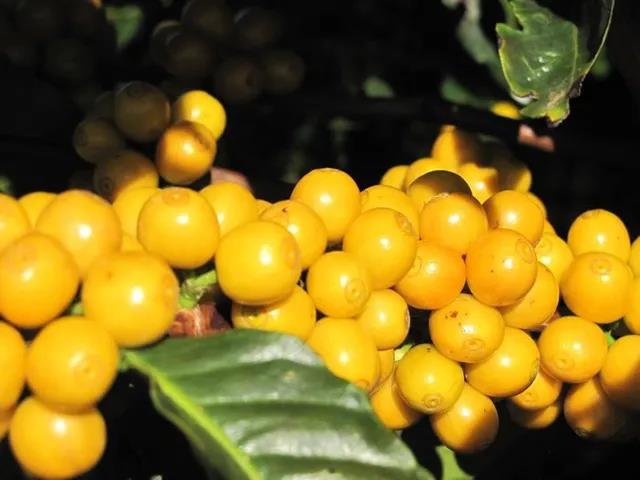
The flavor characteristics of yellow bourbon are very clear, including its sweetness, obvious aroma and very obvious citrus acidity. It often has flavors such as ripe fruit and raisins. Researchers have recently found that there is a relationship between sucrose content, fat and organic acids, which is related to yellow bourbon quality. So far, however, there is not much relationship between luteolin (a substance characterized by yellow) and flavor quality.
The new bright spot of Huang Bourbon
In 2005, IAC resumed its research on the variety, but its attention turned to the flavor experienced in the cup. Thirty varieties studied in 1945 were collected again, while 16 plants had cup test scores of more than 85, which were selected to track the ideal pedigree. The research led by Professor Gerson Giomo is still being carried out in IAC because the team is looking for potentially powerful varieties with high productivity and good flavor.
In 2017, Brazil's yellow bourbon scored 92.33 points in the suntan category in a Cup of Excellence competition. This batch of coffee sold at auction for $126 a pound, 100 times the futures price at the time. Yellow bourbon coffee beans of Queen's Manor
There is also a very delicious yellow bourbon coffee bean on the bean list on the front street, which comes from the legendary Queen's Manor.
Fazenda Rainha (Queen Farm) is located in the Alta Mogiana area of Sao Paulo State (Sao Paulo), north of the city of S ã o Paulo. The estate is well-known in Brazil and is owned by the Carvalho Dias family. Carvalho Dias has four estates that have won awards every year since the first Brazilian COE Competition in 1999, winning more than 12 awards in the past seven years, and even won the champion, 9th and 11th in 2004.
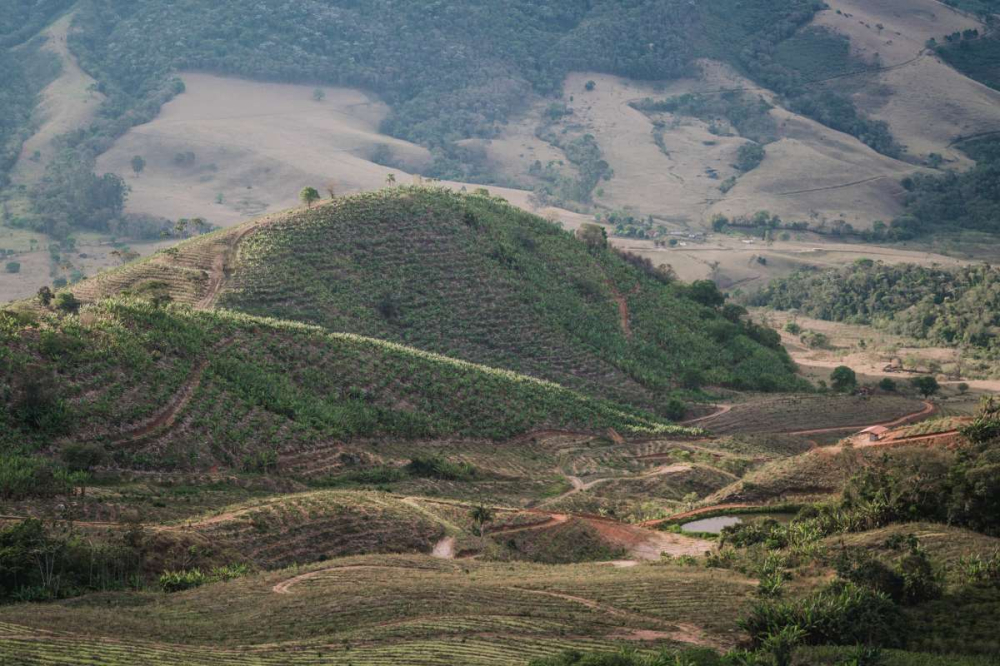
In Brazil, a mechanized farming country dominated by production, there are few boutique coffee farms such as Queen's Manor, which are hand-picked. The area of the Queen's Manor is very small, covering only 280 mu, while 200 mu are planted with yellow bourbon.
One of the most important reasons why Brazil uses half-sun treatment instead of traditional sun treatment is that the traditional sun treatment does not guarantee the quality of large quantities of coffee beans, while the Queen's Manor uses a small-scale exquisite sun treatment using an African-style high bed for sun treatment. and in the sun process, there are special staff to turn over to check its moisture content. So as to improve the quality of coffee beans.
Roasting Analysis of Qianjie Coffee
When the Qianjie coffee got this yellow bourbon coffee from the Brazilian queen's manor, it was baked before and after four stoves, and finally decided to come out two minutes after the explosion. The Brazilian queen at this baking degree is obviously sweet, but it is not so boring sweet, with a hint of lemon aroma in the background, which is more prominent in the wet fragrance stage, and the latter part shows obvious dark chocolate flavor. The overall feeling is relatively round, reflecting the characteristics of Brazil as a whole, while not losing liveliness.
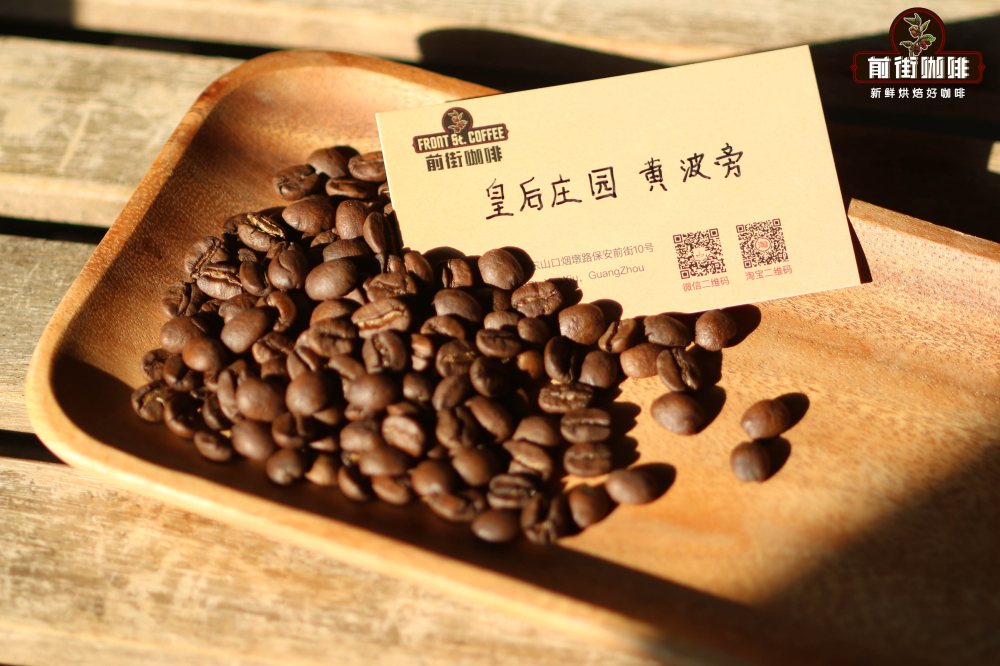
Flavor description
Taste with obvious sweetness, with strong nuts, peanut butter flavor, the latter part of the performance has an obvious dark chocolate flavor, the overall feeling is more round, is a kind of coffee beans that can represent the overall characteristics of Brazilian coffee, but also reflect their own unique liveliness.
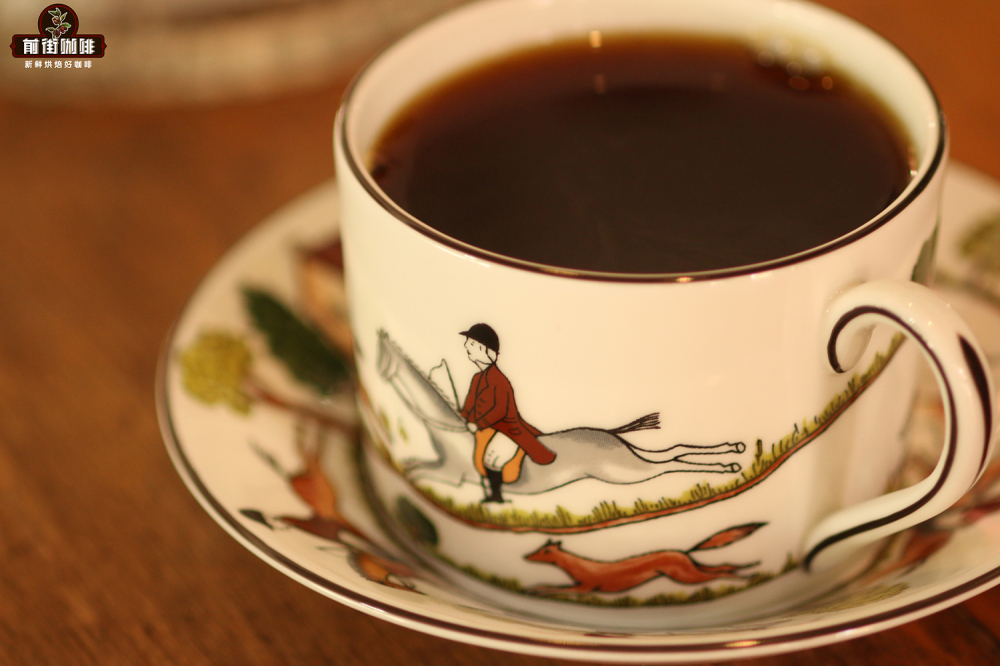
Professional coffee knowledge exchange more coffee bean information please follow the coffee workshop (Wechat official account cafe_style) more boutique coffee beans please add private Wechat Qianjie coffee, WeChat: qjcoffeex
Important Notice :
前街咖啡 FrontStreet Coffee has moved to new addredd:
FrontStreet Coffee Address: 315,Donghua East Road,GuangZhou
Tel:020 38364473
- Prev
Why do coffee beans have seasonal or out-of-season coffee beans?
Coffee is a very complicated drink. Although it is so popular, it is actually just the seed of coffee fruit. Like other crops such as fruits and vegetables, coffee is grown in many parts of the world, and each region has the best time to harvest coffee. People who love strawberries must know that greenhouse strawberries bought in autumn and winter taste like those in spring.
- Next
Understand the importance of coffee roasting maturity how to judge coffee maturity according to taste
Simply put, roasting maturity is one of the things you must know and know about coffee. Maturity determines the flavor, color and texture of each coffee. Judging by the appearance and color of coffee, the maturity is unscientific. Maturity can be as light as fingerprints to convey unique producing characteristics and raw bean treatment methods, which will let you experience the crisp aroma of citrus, delicate flowers or
Related
- Beginners will see the "Coffee pull flower" guide!
- What is the difference between ice blog purified milk and ordinary milk coffee?
- Why is the Philippines the largest producer of crops in Liberia?
- For coffee extraction, should the fine powder be retained?
- How does extracted espresso fill pressed powder? How much strength does it take to press the powder?
- How to make jasmine cold extract coffee? Is the jasmine + latte good?
- Will this little toy really make the coffee taste better? How does Lily Drip affect coffee extraction?
- Will the action of slapping the filter cup also affect coffee extraction?
- What's the difference between powder-to-water ratio and powder-to-liquid ratio?
- What is the Ethiopian local species? What does it have to do with Heirloom native species?

